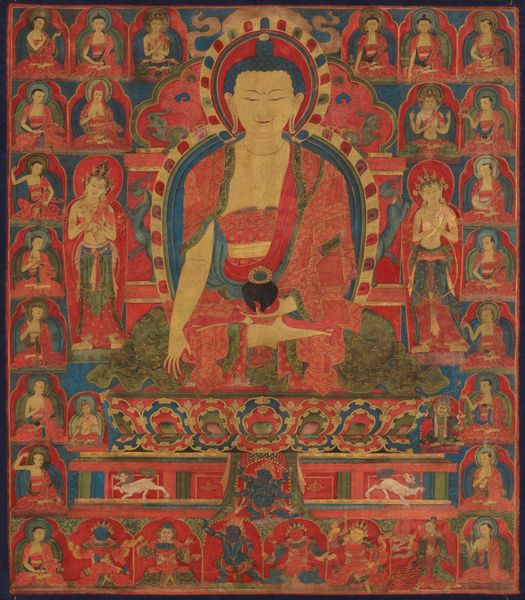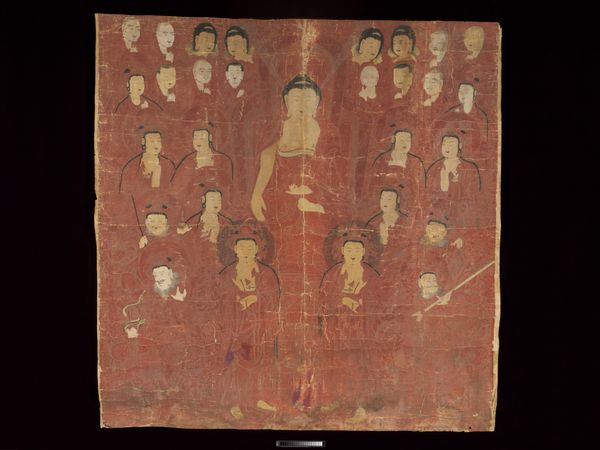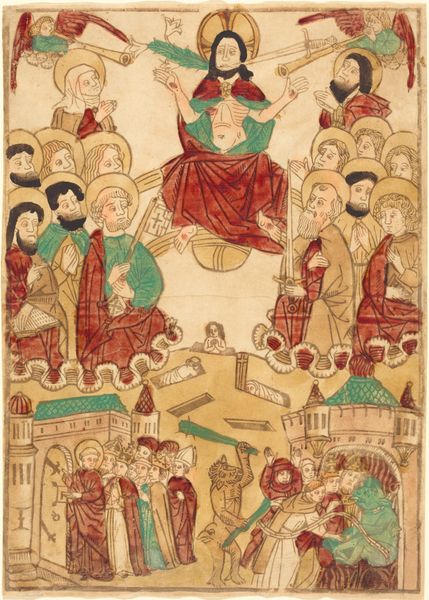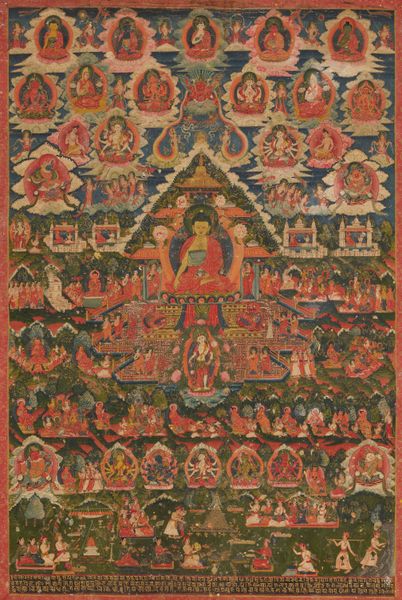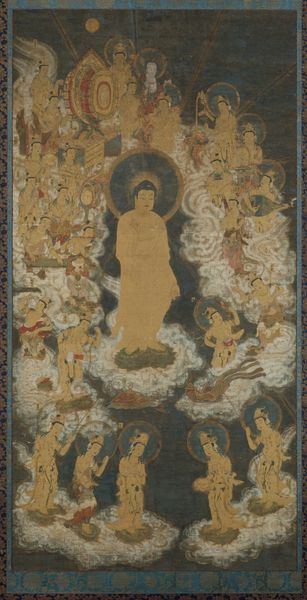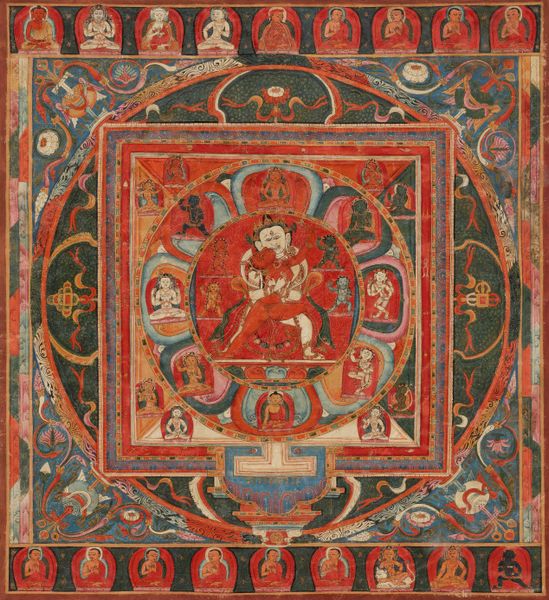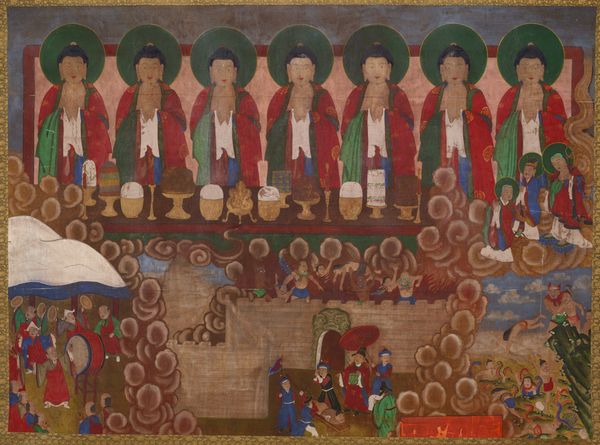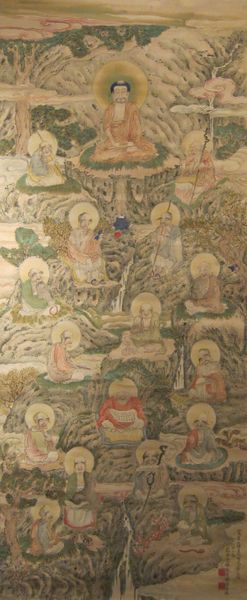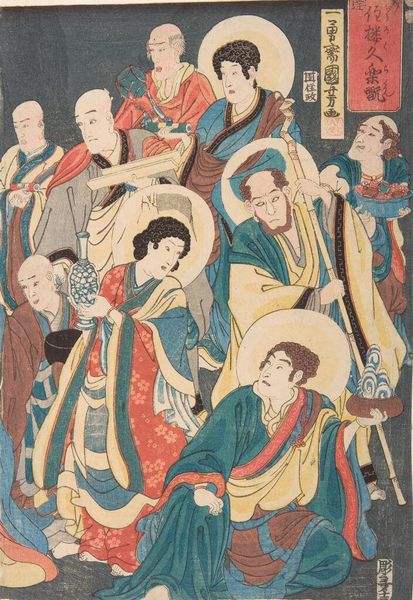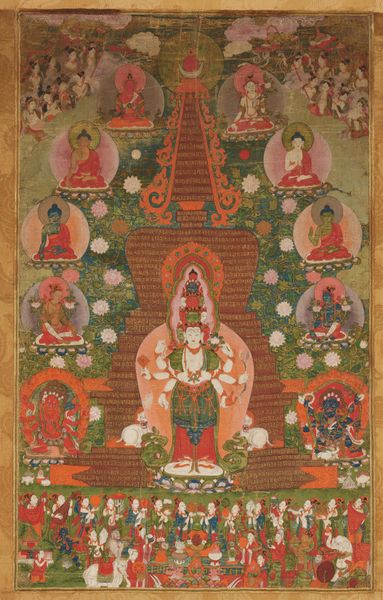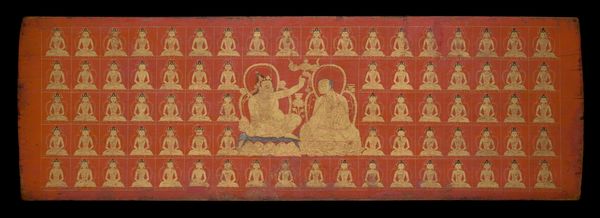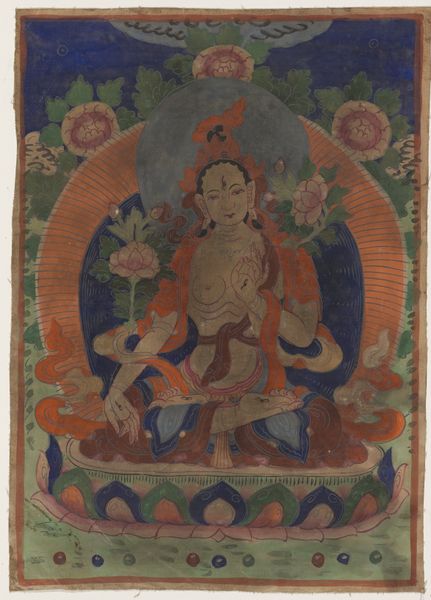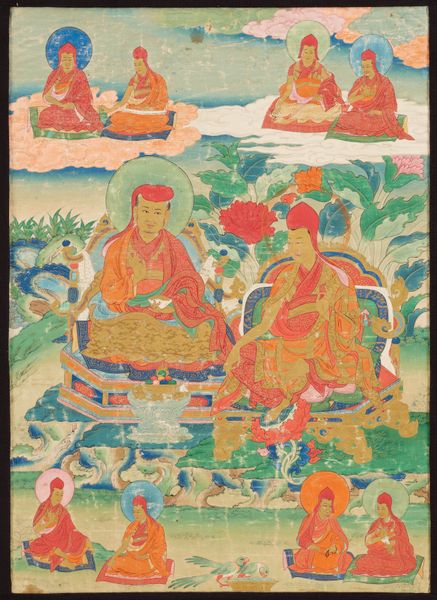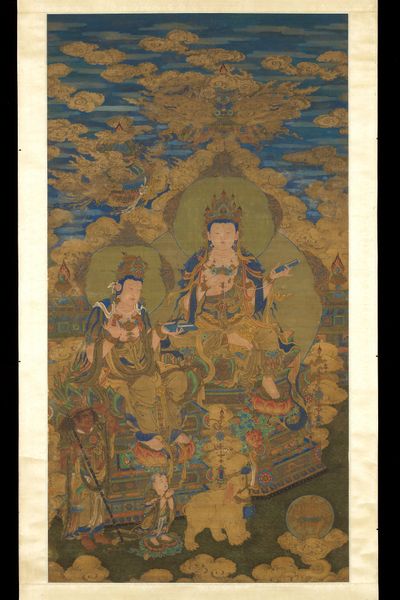
painting, ink
#
painting
#
asian-art
#
figuration
#
ink
#
miniature
Dimensions: 62 x 80 x 7/8 in. (157.48 x 203.2 x 2.22 cm)
Copyright: Public Domain
This anonymous painting presents Ksitigarbha and the Ten Kings of Hell using ink, color, and gold on hemp. Immediately, the composition strikes us with its symmetrical arrangement and hierarchical structure. The Buddha sits centrally, framed by a large green halo, drawing our eyes to the calm, impassive face. Around him, arranged in precise rows, are the ten kings and other figures, their faces painted with a careful attention to detail that contrasts with the flatter, more stylized rendering of their robes. This interplay between detailed portraiture and patterned design introduces a formal tension, a kind of visual stratification. The color palette, dominated by reds, greens, and gold, creates a rich, almost tactile surface. This painting isn't merely illustrative; it's an exploration of how formal elements can guide our perception and understanding of spiritual hierarchies. It challenges fixed meanings by opening up new ways of thinking about space and perception.
Comments
minneapolisinstituteofart about 2 years ago
⋮
In Korea, Buddhist monasteries stressed the communal nature of worship, with monks and laity chanting sutras and placing ceremonial offerings before religious images. As a result, large scale, brightly colored paintings became a common feature in worship halls during the Choson dynasty. This painting represents Ksitigarbha, a bodhisattva who is believed to intercede on behalf of people condemned to the torments of hell. As such, he is often pictured as in this painting, surrounded by the ten kings who reside over the various hells, and the grotesque creatures who carry out the kings' terrible punishments.
Join the conversation
Join millions of artists and users on Artera today and experience the ultimate creative platform.
